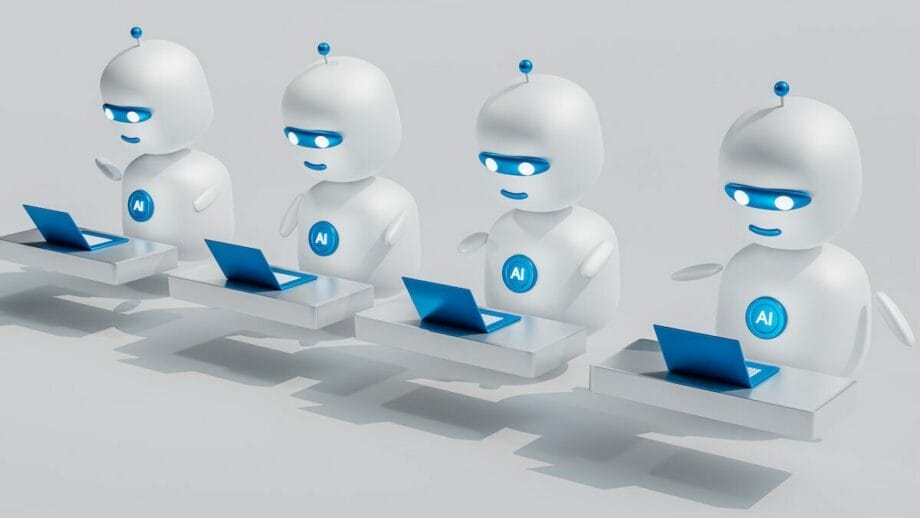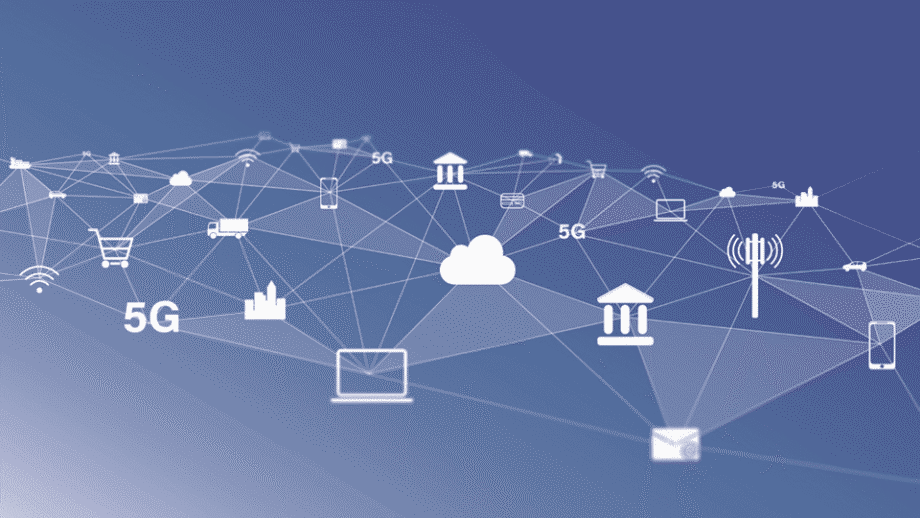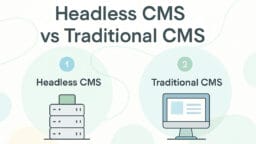In movies, we often see futuristic worlds filled with amazing technologies like smart robots, automated systems, and instant communication. What seemed like science fiction is now becoming reality. In 2025, businesses can easily use many of these advanced technologies that were once only for big companies.
These tools help businesses work better and get more done. What seemed impossible a few years ago is now changing how businesses operate. This article will explore key tech trends in business operations that they can leverage to improve their daily operations in 2025.
Agentic AI: The Rise of Autonomous Digital Workers

Agentic AI refers to intelligent systems that can perform tasks autonomously without human intervention. These AI systems are designed to handle repetitive, time-consuming tasks. They are capable of operating independently once set up. By learning from data, they can adapt to different situations, solve problems, and even make decisions based on set parameters.
One of the key applications of agentic AI is in customer service. AI chatbots and virtual assistants are being used to respond to customer inquiries, provide recommendations, and resolve issues quickly and efficiently. These systems can handle a large volume of interactions simultaneously to improve response times.
In supply chain management, agentic AI can forecast demand, optimize inventory, and manage logistics. It can predict potential disruptions in the supply chain, allowing businesses to take proactive measures and reduce delays.
Similarly, in financial operations, AI systems are used to automate tasks like transaction processing, fraud detection, and financial forecasting. This helps businesses reduce human error and improve accuracy.
The rise of agentic AI is changing business workflows. Businesses can free up their employees to focus on higher-level, creative, and strategic work by automating routine tasks. This not only increases efficiency but also helps companies scale operations without significantly increasing labor costs. As these AI systems continue to evolve, their role in business operations will only expand, providing more opportunities for automation and innovation.
Generative AI: Transforming Content and Decision-Making

Generative AI refers to systems that can create new content, such as text, images, or videos, based on the data they are trained on. These AI tools analyze patterns in existing data and then use that information to generate new outputs.
In content creation, generative AI can help businesses produce written content, social media posts, and even advertisements quickly. This saves time for marketing teams as AI handles the creation process. Similarly, in data analysis, generative AI helps businesses make sense of large amounts of data, providing valuable insights to guide decision-making.
Generative AI is making a big difference in areas like marketing, product development, and strategic planning. In marketing, it can personalize content for individual customers, helping businesses engage with their audience more effectively.
In product development, AI can suggest new ideas based on customer feedback and market trends. It also plays a role in strategic planning by simulating different scenarios and helping businesses choose the best course of action.
Many industries are adopting generative AI tools. For example, AI is used in the fashion industry to design new clothing lines, and in tech, tools like ChatGPT help developers by generating code. These tools are becoming essential for businesses to stay competitive, as they speed up processes and improve decision-making.
Visitor Management Systems: Enhancing Physical Security and Efficiency

In high-security buildings, as often seen in movies, access control is vital to maintaining safety and protecting sensitive information. Similarly, businesses today need efficient visitor management systems to ensure only authorized individuals enter their premises.
Visitor management software provides a comprehensive solution for managing office visitors, much like the systems featured in high-security environments. It includes features such as real-time tracking, easy visitor registration, integration with access control systems, and detailed reporting.
These systems enhance security by controlling access, ensuring that only registered visitors are allowed entry. They also improve the check-in process, making it quicker and smoother for visitors and employees. Just like in high-security buildings, businesses can rely on these systems to streamline operations, maintain compliance, and safeguard sensitive areas.
“Turn check-in into a warm welcome, not a wait. Quick sign-in and instant passes make guests feel seen while you stay safe.”Threshold Security
Cloud-Based HR Solutions: Simplifying Employee Management

Cloud-based HR management software immensely helps businesses streamline their HR processes. This growing trend offers a more efficient and scalable approach to managing human resources.
Applications of Cloud-Based HR Solutions
- Payroll management: Automate payroll processing, reducing errors and ensuring employees are paid accurately and on time.
- Performance reviews: Track employee performance through centralized reviews, helping HR teams manage feedback and growth.
- Time tracking: Easily monitor employee hours and attendance, minimizing manual tracking and enhancing productivity.
- Benefits administration: Manage employee benefits, including health insurance and retirement plans, all within a single platform.
Benefits of Cloud-Based HR Systems
- Flexibility and accessibility: These platforms are accessible from any device with internet access.
- Ease of use: Cloud HR software offers intuitive interfaces, making it easy for HR teams and employees to navigate and complete tasks.
- Scalability: As businesses grow, cloud-based HR systems can scale with them, handling an increasing number of employees without adding complexity.
By centralizing all HR functions, these systems reduce administrative overhead, improve employee experience, and help ensure compliance with labor laws and regulations.
Remote Work Technology: Seamless Collaboration Tools

The shift to remote work has accelerated the adoption of cloud-based tools and collaboration platforms. Below are the applications of remote work technology:
- Project Management Tools: Platforms like Asana and Trello enable teams to organize tasks, track progress, and meet deadlines. These tools help managers assign work, set priorities, and monitor the completion of key projects.
- Video Conferencing: Tools such as Zoom and Microsoft Teams provide seamless video meetings, making communication easy and effective. These platforms offer features like screen sharing, virtual whiteboards, and breakout rooms to enhance collaboration, whether it’s a quick check-in or an in-depth brainstorming session.
- Document Sharing and Collaboration: With platforms like Google Workspace, teams can work on documents, spreadsheets, and presentations simultaneously. These tools allow for real-time editing, ensuring that all team members are on the same page and reducing version control issues.
- Smart Devices and IoT in Business Operations: The Internet of Things (IoT) refers to the network of physical devices embedded with sensors, software, and other technologies that allow them to collect and exchange data over the internet. By leveraging IoT, businesses can optimize operations, improve decision-making, and enhance overall efficiency.
Applications of IoT in Business Operations
- Smart Inventory Management: IoT devices, like RFID tags and smart shelves, help businesses track inventory in real-time. This allows for better stock control, reducing the chances of overstocking or stockouts. Retailers and warehouses can automatically reorder products when stock levels fall below a set threshold.
- Energy Management: Smart devices, such as energy-efficient thermostats and lighting systems, allow businesses to monitor and control energy consumption. These devices can adjust settings based on occupancy or usage patterns, leading to cost savings and a sustainable operation.
- Remote Monitoring: IoT sensors can monitor equipment and machinery, providing real-time data on their performance. Businesses in manufacturing and logistics can use this data to predict maintenance needs, reducing downtime and increasing productivity.
- Supply Chain Optimization: IoT-enabled tracking systems can be used to monitor goods as they move through the supply chain. Companies can gain real-time visibility into shipments, helping to prevent delays and improve delivery times.
Cloud Computing and Infrastructure as a Service (IaaS)

Cloud computing has transformed how businesses manage their IT infrastructure by offering flexible, scalable, and cost-effective solutions. One of the most popular cloud models is Infrastructure as a Service (IaaS), which provides businesses with virtualized computing resources over the internet.
IaaS delivers essential computing infrastructure such as servers, storage, and networking on demand. It allows businesses to avoid large upfront costs and the complexities of managing physical infrastructure. Popular IaaS providers like Amazon Web Services (AWS), Microsoft Azure, and Google Cloud offer businesses access to powerful infrastructure that can be scaled as needed.
Businesses can manage the quick deployment of applications. IaaS offers a rapid way to set up, configure, and deploy applications without the need for time-consuming hardware installations. This has immensely helped in speeding up project timelines.
Leading IaaS providers offer advanced security features, including data encryption and compliance certifications, to help businesses secure their operations. Also, with cloud-based infrastructure, businesses can implement robust disaster recovery strategies to ensure minimal downtime and data loss in case of emergencies.
“When storms hit, the cloud holds. Snapback recovery and mirrored storage turn disaster plans into routine drills.”Oracle
Sustainability and Green Tech: Reducing Environmental Impact

Sustainability and green technology have become top priorities as businesses face increasing pressure to reduce their environmental footprint. Green tech refers to innovative technologies that help businesses reduce energy consumption, minimize waste, and promote sustainable practices.
These technologies not only help companies meet regulatory requirements but also contribute to long-term cost savings and enhance their brand image as environmentally responsible organizations. Let’s discuss a few applications of green tech in Business Operations:
- Energy Efficiency: Businesses are adopting energy-efficient technologies like LED lighting, smart thermostats, and energy-efficient HVAC systems. These systems help reduce energy consumption and lower operational costs by adjusting usage based on real-time conditions, such as occupancy or time of day.
- Renewable Energy Sources: Many companies are turning to solar, wind, or geothermal energy to power their operations. This shift reduces dependence on fossil fuels and decreases a company’s carbon footprint. For instance, large tech companies like Google and Apple have committed to using 100% renewable energy for their global operations.
- Waste Reduction and Recycling: Green tech also includes innovations in waste management. Technologies like waste-to-energy systems and smart waste sorting systems allow businesses to recycle more efficiently and reduce landfill waste. For example, companies are now using AI to sort recyclable materials with greater accuracy.
- Sustainable Supply Chains: Companies are using technology to track and reduce the environmental impact of their supply chains. IoT sensors monitor resources used at different stages of production, helping businesses reduce waste and optimize supply chain operations for sustainability.
Endnote

As technology continues to evolve, businesses have the opportunity to improve efficiency, flexibility, and sustainability. Success in the coming years will depend on how companies adopt and use these tools to enhance their operations and adapt to change. These advancements will help businesses stay competitive and prepared for future challenges. They can create more value and foster a collaborative work environment.






